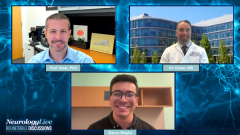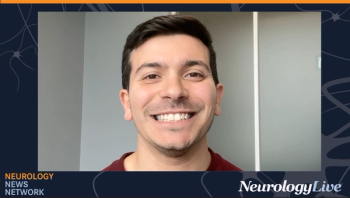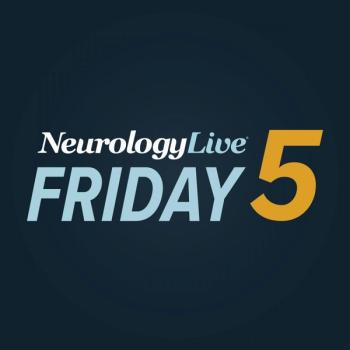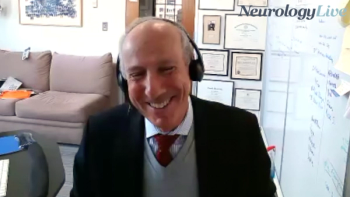
Next Frontier of Research in Multiple Sclerosis Remyelination
The pair of neurologists highlight key advances needed in imaging, trial design, and preclinical modeling to drive remyelination breakthroughs in MS.
Episodes in this series

Despite major advancements in the treatment of multiple sclerosis (MS), including the emergence of highly effective disease-modifying therapies that target inflammation and reduce relapse rates, there remains a critical unmet need: the ability to repair damaged myelin. Remyelination—the process by which the central nervous system regenerates myelin sheaths around axons—is a key neuroprotective and potentially restorative goal in MS. While spontaneous remyelination can occur, particularly early in the disease, it is often incomplete and declines over time, contributing to irreversible neurological disability.
In recent years, an influx of research has significantly advanced our understanding of the biology of remyelination, uncovering new molecular targets, cellular mechanisms, and imaging modalities. Yet, despite promising results in preclinical models, there are still no FDA-approved therapies that directly promote remyelination. In this panel discussion, Ari Green, MD, and Paul Tesar, PhD, examine the evolving landscape of remyelination science—highlighting the translational challenges, trial design hurdles, and promising agents in development—while offering insights into the future of regenerative strategies in MS care.
In this final episode, Green and Tesar explore what’s needed to accelerate therapeutic progress in remyelination. They outline priorities in neuroimaging interpretation, biomarker development, and human model systems, including the value of moving beyond rodent studies. The discussion also highlights the importance of optimizing dosing regimens and embracing more biologically relevant platforms to guide next-generation drug development.
Transcript edited for clarity.
Marco Meglio: What sort of advances in drug development, trial methodology, or even neuroimaging do you believe are needed to accelerate progress in the remyelination space? What do we, as a clinical community, need to be continuing to do?
Ari Green, MD: Yeah, so I think the first part, in terms of advances and understanding the biology of myelin—that's critical. Understanding how much each part of myelination is tied to the other. For example, how much the length of the myelin internodes is related to how thick the myelin is or how effectively it conducts signals—those things need to be better understood. And those are critical for us in developing clinical programs or enhancing clinical programs for remyelination.
But most importantly, for us in making remyelinating therapies, is kind of touching on what you said about neuroimaging—which is not so much the development of new techniques, which may be important, but also the cautious interpretation of what people observe and see. A lot of people make a lot of assertions about what records myelin, and again, the level of evidence that it truly reflects myelin is only modest for some of these techniques. I think we've got to be cautious, careful, and wise as a community about how we employ those tools.
We are at the cusp of really promising developments in terms of remyelinating therapies. We just need the scientific approach to understanding what's going on at a biological level to continue to advance, and the development of those biomarkers to be advanced alongside it. I do think that if we do that right, we will get therapies that are going to make a big difference.
Paul Tesar, PhD: I think on the drug discovery and development side, we need to continue to advance and improve some of the human preclinical models. That includes things like advanced human organoid systems that can both replicate the timing and multicellular aspects of human disease, including the inflammatory component.
On the trial side, I think continued development and validation of biomarkers and imaging measures—as Ari pointed out—that more directly reflect remyelination and can be linked to meaningful clinical outcomes will ultimately enhance the success of clinical trials in this space.
Something that was alluded to in an earlier question: I think it’s going to be important that we define the optimal treatment regimens for remyelination in human patients. We certainly need to explore whether chronic, continuous, daily dosing is equivalent to—or better than—what might be episodic dosing: weekly, monthly, or biomarker-driven regimens that stimulate regenerative processes and then allow them to go forward to fruition.
Even with these things aside, there's always room for improvement and opportunities to build these pipelines better. But I really do feel we're at a transformative moment for multiple sclerosis. We’ve spent decades controlling inflammation, and now we're at the threshold of therapies that can actively rebuild myelin and restore neurological function.
Ari Green, MD: Yeah, one thing I wanted to add there—touching on something Paul said earlier about model development and the points about rodent oligodendrocytes, and whether we can extrapolate from what we know about rodent oligodendrocytes over to humans—is the need to develop models that are outside of rodents. That includes primate models and other approaches that may be critical, especially for the development of therapeutics that help restore brain function.
Using organisms that have brain systems closer to the human nervous system may be critically important. We have to obviously do that guided by significant ethical constraints. There’s a lot of consideration surrounding that, and we have to do it carefully and cautiously, but it’s probably critically necessary for the development of therapies that are maximally successful for restoring function in patients.
Newsletter
Keep your finger on the pulse of neurology—subscribe to NeurologyLive for expert interviews, new data, and breakthrough treatment updates.




































